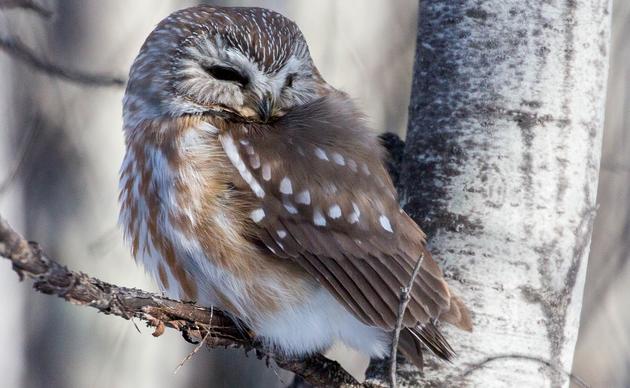Article originally posted by Chewy
Looking for a fun hobby you can do anywhere, anytime, without spending much cash up front? You can’t go wrong with birding, commonly known as bird watching.
“Birding is a totally accessible activity,” says says Rich Merritt, director of operations for Audubon New York, a nonprofit conservation organization that focuses on birds as well as other wildlife. “You can do it through your home or car window, while taking a rigorous hike, or anything in-between. I know bike riders who bird while biking, at least by ear.”
You can do it purely for fun or keep a life list—a birding term for the running list that bird enthusiasts keep of all the different birds they see. Whatever your goal, you’ll be rewarded by the sights and sounds of beautiful and interesting feathered creatures, especially come spring and fall.
Here, from two longtime pros, is how to get started on your avian adventure.
Step Outside
Walk outside your back door, or even peer out your back window. Many types of birds hang out in backyards, especially if you have bird feeders, says Sharon Stiteler, founder of Birdchick.com and the author of “1,001 Secrets Every Birder Should Know.”
Fill up the feeders with birdseed—Stiteler says black oil sunflower seed is a good overall choice—and then sit back and see how many different species show up. You also can try something like Morning Song Birdwatcher’s Blend Wild Bird Food, which not only has black oil sunflower seed, but also contains millet and safflower to deter squirrels.
Because birds also are attracted to water, providing a fountain or shallow birdbath where birds can bathe and drink from might make your yard an even more popular place, Stiteler says.
Get a Guide
The best way to bird watch is to look and listen, because many birds have unique songs and calls, Merrit says. You’ll be surprised by how many species you already recognize, even if you’ve never gone bird watching before.
“A bird book can be very helpful [for identifying birds], and I highly recommend everyone have one,” he says.
If you’re going the book route, check out “National Geographic’s Complete Birds of North America” for a comprehensive guide to 1,000 different species. For common species in your garden, “Sibley Backyard Birding Flashcards” might be more your speed.
For something on your mobile device, there are apps to identify birds as well. Stiteler recommends “Merlin” by the Cornell Lab of Ornithology. You simply download the app and take your smartphone along when you bird-watch.
Invest in Binoculars
While you don’t need a pair of bird watching binoculars to be a successful birder, they definitely make birding a whole lot easier.
“You can get really great optics in the $100 to $200 range,” Stiteler says, adding that it’s good to visit a store and compare a few prior to purchase. “Look for a pair with a good lifetime waterproof warranty, and make sure that they aren’t too heavy for you.”
To check for brightness and clarity, Stiteler says to point the binoculars at the darkest corner of the store and gaze through them. This will ensure your bird watching binoculars are powerful enough to catch a glimpse of the smallest or fastest feathered creature—even on rainy days or at the crack of dawn.
Seek Out Different Locations
You can hang out in your backyard all day and see plenty of bird species perching and munching at your bird feeders. But if you want to expand your range, visit different locations and habitats, Merritt says.
“Some birds like tall trees, some prefer shrubs, some prefer to nest along streams, while others can be found in open fields,” he says. “For example, you won’t find an Eastern (or Western if you live on the west side of the country) Meadowlark in the forest, but you might easily find one in an overgrown hayfield.”
If you live in the city, no problem! Head to the nearest park—especially during the spring and fall when birds are on the move—and bird watch there.
“City parks can be amazing places to bird because they act like an oasis in a sea of concrete,” Merritt says.
Connect With Local Birders
“Every state has a birding club or a Facebook birding group,” Stiteler says.
Best of all, birders are happy to share information. They’ll help you discover what birds are in your area and direct you where to go to find a particular bird.
Become a Morning Person
As the saying goes, the early bird catches the worm, which is why many birders head outdoors at dawn.
“Birds sleep at night and are hungry in the morning, so they have to go out and eat,” Stiteler says.
Though you can bird watch at other times of day, avoid noon. Noon is when birds are least active, Stiteler says.
If you have your heart set on seeing many species, you’ll have to accept the fact that birds are most vocal and active when the sun comes up, making them easier to spot and identify during those early hours, Merritt says.
“For those who aren’t morning people, birding can quickly become quite exhausting,” he says. “Coffee obviously helps—and so do donuts.”
Contribute to Our Conservation Success
You play an important role in our mission to protect birds & the habitats they need to survive.




